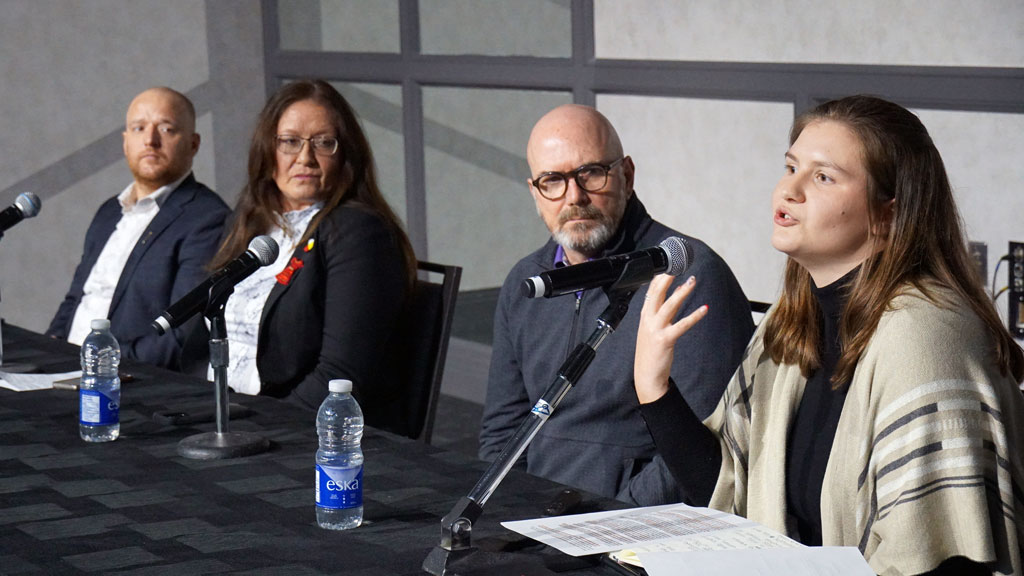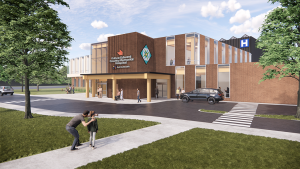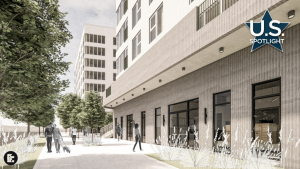The connection between timber construction and First Nations communities goes back ages, long before today’s mass timber movement in major cities such as Toronto.
That movement should grow, however, in Indigenous communities as relationships are forged between mass timber proponents and First Nations partners.
Patrick Chouinard, of mass timber manufacturer , said he hopes more Indigenous fabrication centres for mass timber can be established by Element5 in First Nations communities.
He said Element5 could produce “truckloads of billets” and ship them to Indigenous areas to set up in First Nations-owned facilities for fabrication tailored to local projects.
“They own their own projects, hire local labour.”
Chouinard was a conference speaker on a panel session on Indigenous collaboration.
“Mass timber generally is ideally suited for First Nations communities because you can use it for so many kinds of buildings,” he said, pointing out firehalls to housing as examples.
Among “the most beautiful buildings in mass timber are in Indigenous communities,” he said at the conference sponsored by the Ministry of Natural Resources and Forestry in partnership with the. The conference was organized by Mike Yorke.
“They have figured out how to integrate these buildings with nature and with their culture.”
When Element5 was founded in 2015 it partnered with in northern Ontario to have a measure of control over the supply chain “from the forest floor to finished product.”
White River is 19 per cent owned by the First Nation community in White River.
Element5’s first Indigenous project was London’s Southwest Ontario Aboriginal Health Access Centre, an open CLT and glulam design. Wood was specified for the project in part because of its healing properties, he said.
Chouinard said the company hopes to play a role in mass timber in educational institutes in Toronto to create “healthier schools” and also for housing on First Nations communities because of its durability, affordability and erection speed.
Panellist Valerie Vanderwyk, executive director of the Aboriginal Apprenticeship Board of Ontario, said the board is working to secure partners for mobile training in Indigenous communities.
The idea is to “tear down that residential school model of training for Indigenous youth where we move them from their communities for education.”
While training in-situ isn’t always possible, Vanderwyk said creating a support system for Indigenous youth to be successful in educational endeavours outside their communities is paramount.
She said the board prefers partnering with “building trades friends, partners and associations” that ensure young people trained will have good jobs waiting.
Retention efforts are equally important, she added, noting Indigenous youth under 25 are the fastest growing demographic in Canada.
“There is your labour pool.”
She said Indigenous communities want to work with construction partners “who want to facilitate changes that we all know needs to take place.
“When we have opportunities to bring people together like this (conference) who are genuinely invested in making improvements for Indigenous people that is where we start to see the change.”
As a training services representative for the Workers Health & Safety Centre, Vanderwyk said she helps First Nations create Ministry of Labour-approved occupational health and safety programs in their own communities.
Ivan LaRoche, of the Carpenters’ Prairie Arctic Region Council in Winnipeg, told the conference audience there is a desire in First Nations communities to pursue Red Seal certified building trades but that training isn’t always accessible.
The Carpenters’ council works with organizations such as the Indigenous Leadership Development Institute to develop apprenticeship programs and it works with contractors to ensure those students secure good jobs.
He said Manitoba’s workforce is aging and collaborative initiatives with Indigenous communities on training and retention is vital to developing a sustainable workforce.
Also part of the panel session was Kyara Wendling, an intern architect at Smoke Architecture, an Indigenous-led, all-women firm based in Hamilton.
Wendling highlighted a number of mass timber projects in the firm’s portfolio as an “Indigenous collaborator,” including Centennial College’s recently completed A-Building.
She said mass timber is often a material of choice in the Indigenous communities Smoke has worked.
Wendling draws parallels between cross-laminated timber and traditional Indigenous building techniques which include bending and tying multiple tree saplings together to form a strong structure.
“Looking back at traditional Indigenous ways of stewardship (of the forest supply) we can continue to use wood in a sustainable way.”






Recent Comments
comments for this post are closed